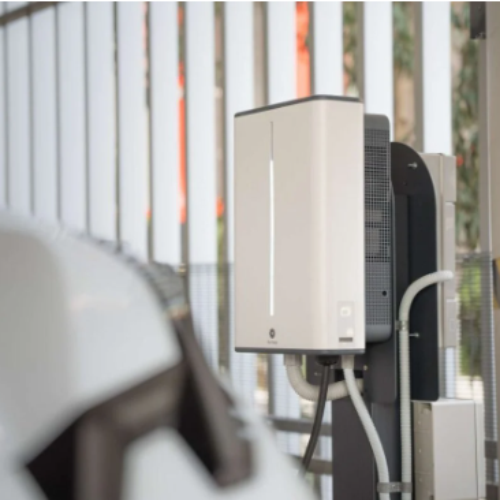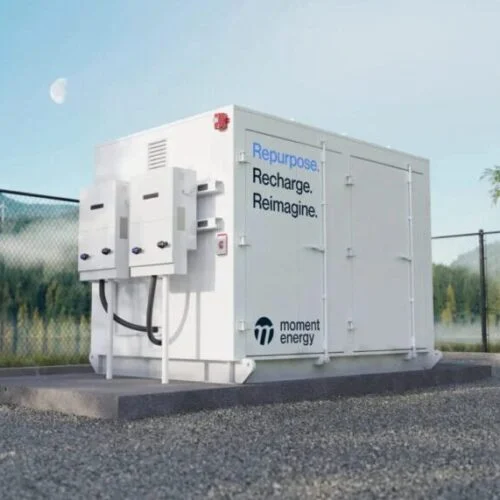With any transformation of an industry – and in particular an industry that relies so heavily on consumer habits and preferences – there are a myriad of questions to be answered and hurdles to be solved. Anyone familiar with the decarbonisation of transport could probably give you a list as long as your arm: the availability of chargepoints, the impact of increased use of electricity on the grid, electricity vs hydrogen, the high upfront cost of electric vehicles (EVs) etc.
Although these require long-term planning that must start now, most will not become problems unless mass uptake of EVs is achieved. However, this can’t happen without a clear, concise plan to support everyone – and not just your typical early adopter – in making the switch. Without a plan, the high upfront costs and lack of driveways for private home chargers in many communities run a real risk of remaining too prohibitive.
Early adopters of new technologies are typically not your average user, and often reflect not only those who are clued up but also those who can afford to shell out on a new bit of new kit. Seen time and time again across many different sectors, the example perhaps most well known by those in the energy circles is domestic rooftop solar PV, which in the heady days of the early feed-in tariff was predominantly adopted in more affluent areas with a high proportion of detached housing, according to statistics released by what was then the Department of Energy and Climate Change in 2012.
Indeed, this is also a trend that EVs are seemingly following. A 2015 report for the Department for Transport found that most private EV owners at the time were middle-aged, male, well-educated, affluent and lived in areas with households containing two or more cars, and with the ability to charge at home.
Of course, this was six years ago and there has therefore, been plenty of time for the demographics to change. However a 2019 report carried out by Frontier Economics on behalf of the Environmental Defense Fund found that wealthy people were still buying EVs at higher rates than those on lower incomes, and that half of all ultra-low emission vehicles were owned by households in the richest two income deciles, compared to only a quarter for internal combustion engines (ICE). Meanwhile, households in the lowest two income deciles made up just 4% of ultra low emission vehicle owners, but over 10% of ICE vehicle owners.
There are a number of reasons behind this, with the upfront cost of an EV – which is higher than an ICE equivalent despite lower lifetime costs – a key factor, although this will likely change as prices continue to fall.
A second factor is that many lower income households, particularly in urban areas, do not have access to off street parking via driveways, meaning they are unable to install a private chargepoint. This either results in them having to rely on more expensive public rapid charging, or being left out of the transition completely.
In fact, the 2019-2020 English Housing Survey by the Ministry of Housing, Communities and Local Government found that in the social housing sector, just 1% of dwellings were classed as detached houses – and therefore more likely to have a driveway – while 36% were purpose built high-rise flats, a significant increase on the 11% in the private sector.
On-street charging and moving away from the early adopter
So how do you solve this, and place the entire breadth of society at the heart of this transition? It would be easy for the EV charging sector to put this problem on the backburner and target the low hanging fruit of the typical early adopter, but just a quick glance at the work of some of the well-known names – and indeed lesser known – in the sector proves otherwise.
Enter on-street charging. Enter companies like ubitricity, Connected Kerb, Source London, Trojan Energy, char.gy and many more. Enter a different way of thinking of EV charging.
On-street charging takes a few different forms, a shapeshifter that keeps the same core: enable EV charging on the doorstep of those whose doorstep is the pavement. The most popular form is arguably lamppost charging, utilising current infrastructure with the electricity connection already in place and keeping large and – according to some – unsightly chargers from blocking the paths.
“It’s so easy to convert a lamppost to a lamppost and an EV charger. Now we can do it in less than an hour. Just think about that. We can do it in less than an hour,” Bernard Magee, director of EV Charging, Siemens UK&I, told Current± recently.
Lamppost charging is being rolled out across the country, although, like with many things, London has a monopoly. Other solutions include Connected Kerb’s kit, made up of a below ground charger and an above ground socket, a feature which CEO Chris Pateman-Jones said means it takes just 45 minutes to replace them if they get damaged, with reliability a key consideration of on-street charging.
“We’re trying to provide a similar level of convenience and reliability for those who have to park on-street as you would have if you had a driveway,” he said.
ORCS: Getting the funding model right
On-street charging also helps to alleviate some of the upfront costs, as the installation is not at the expense of a driver. While drivers will need to pay to use the chargers, the cost of installing on-street charging is typically borne by either the chargepoint operator itself or, more commonly, central government and local authorities through measures such as the On-street Residential Charging Scheme (ORCS).
The ORCS is a pot of funding earmarked for local authorities to dip into, with 75% of the capital costs of procuring and installing the chargepoint and an associated dedicated parking bay covered. Established in 2017, the funding available has been replenished annually, starting with £1.5 million in 2017/18 and jumping to £20 million for 2021/22.
Funding is not the sole solution however, as despite the availability of money to get on-street charging going, in 2018 it was revealed only five local authorities had taken advantage of the ORCS. As such, the government has repeatedly called on councils to pick up the pace and pick up the money, with the Local Government Association hitting back that already cash-strapped councils should not be responsible for what it described as “replacing petrol stations”.
“The reality of the market at the moment is the number of on-street residential charging units is extremely low across the UK,” according to Pateman-Jones.
Alongside this, over the past year or so, not only have local authorities’ budgets tightened but time and resource has become a precious commodity with COVID-19 sucking most councils dry of all three. Who can focus on installing EV chargepoints – ones where 25% of the cost is still for you to source – when there’s a pandemic knocking at your door?
And so data released by Centrica in January and sourced from Freedom of Information requests found that over the next four years, only 9,317 on-street chargepoints are planned for installation by local authorities. This breaks down to just 35 chargers per council, with 126 councils across the UK having no concrete plans to install more EV chargers than they currently have between now and the end of 2025. With the release of this data, Centrica’s sustainable transport editor Amanda Stretton warned of how “unfair” it was that those without a driveway are at risk of being left behind.
Additionally, local authorities often install chargers in areas following requests from residents, and as ubitricity’s head of marketing and sales Shayne Rees explained at a recent industry event, because EV take up has been led by more affluent car buyers, “the more affluent areas are, so far, where the majority of on-street chargers have been placed”.
So while the funding may be at least partially there, more work is required to enable more local authorities to take advantage of it and facilitate this rollout.
This is to be addressed in the Competition and Markets Authority’s (CMA) study into the EV charging sector, with initial feedback highlighting how on-street charging is reliant on Local Authorities as well as referencing concerns over the attractiveness of the business case for investment.
Pateman-Jones said that at Connected Kerb, the strategy now is to move away from doing smaller 30 or 40 charger sites in areas that would see high utilisation towards deploying very large numbers of chargers in slow adopting areas to try and stimulate growth.
“If you go to a council and you’re deploying 1,000 charging points across an area, you can match mix and match lower performing assets and higher performing assets. So you can afford to go into an area which may be slightly slower adopting, because you’re also in an area which is higher adopting.”
He gave the example of deploying in around ten council estates in Lambeth, London, where he said other chargepoint operators would likely stay away from as there would be low utilisation.
“Turns out actually that would be the wrong assumption as we’ve actually got really good utilisation on those sites.”
On-street charging: The great enabler?
On-street charging will be an enabler; there’s no doubt about it. And it will sit in conjunction with home charging, rapid charging, workplace charging and destination charging; all EV charging solutions will be required to electrify the country’s transport.
Some more support for on-street charging is clearly still required on the local authority side, and work will need to be taken to ensure the rollout continues scaling up and expanding into the areas that need it most, with those in less affluent areas not only less likely to have a driveway but also being more likely to suffer from air pollution.
But overall, the future appears to be bright, and with the upfront costs of EVs continuing to fall and selection of more affordable models expanding, on-street charging will hopefully be just the thing to enable people from across the spectrum of society to drive electric.
And as Pateman-Jones said: “We are spoilt for choice at the moment; there are simply so many streets.”





